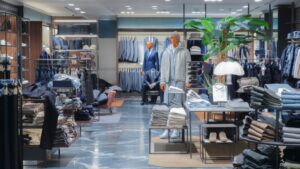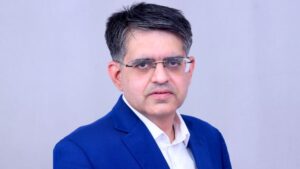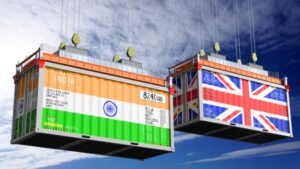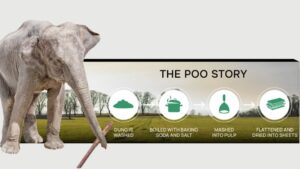With wide repertoire of brands like Vans, Lee, The North Face, Timberland and Dickies and many more in its kitty, VF Corp. is one of the world’s largest apparel, footwear and accessories companies. The company, which generates a revenue of US $ 13.8 billion, has come up with the latest iteration of its Made for Change Sustainability & Responsibility report, including the announcement of industry-leading science-based targets (SBTs) and a bold vision for sustainable materials.
So, what’s the report saying!
Focusing on environmental and social improvements across its business, portfolio of brands, global supply chain and communities worldwide, the report provides detailed information about company’s achievements from the last reporting year (2018). Notably, Circular Business Models, Scale for Good and Movement Makers are the 3 focus areas of VF’s Made for Change strategy.
The Circular Business Models is about its commercialisation to reduce VF’s environmental impact while creating new growth opportunities. Scale for Good is leveraging VF’s global scale and influence to drive impact reduction across the business and broader industry. Regarding Movement Makers, the purpose is to enable VF and its brands serve as a catalyst for powering movements of sustainable and active lifestyles for the betterment of people and planet.
In alignment with the UN Sustainable Development Goals (SDGs), VF has made measurable progress against its targets. It includes the following:
- 50per cent of VF’s distribution centres around the world are zero-waste facilities.
- 16 of VF’s owned buildings are LEED certified.
- The launch of a bold sustainable materials vision focusing on 3key concepts: regenerative, responsibly sourced renewable, and recycled materials.
- The improvement of worker livelihoods in Bangladesh, Cambodia, India, the Dominican Republic, Vietnam, China, Kenya and Lesotho through VF’s Worker and Community Development (WCD) Programme.
It is pertinent to mention here that SBTs are greenhouse gas emission reduction targets that are in line with meeting the goals of the Paris Agreement. The company claims that its new SBTs are among the most ambitious in the industry and are aligned with the ideology of using its global scale for good.
It has set a 1.5-degree target for its Scope 1 and Scope 2 emissions, and well-below 2-degree target for its product-related Scope 3 emissions. There’s a target of bringing an absolute reduction by 55 per cent in Scope 1 and 2 greenhouse gas emissions by 2030, and an absolute reduction by 30 per cent in Scope 3 greenhouse gas emissions by 2030, focusing on farm-to-retail materials, sourcing operations and logistics (from a 2017 baseline year).
VF Corp. partnered with global consultancy, the Carbon Trust, to model data across its owned and operated facilities as well as its entire operations from farm to retail store; and engaged deeply with its entire value chain.
Primary data was gathered from VF’s 1,400 owned facilities, distribution centres and global logistics as well as more than 100 Tier 1 and Tier 2 suppliers, strengthening its ability to identify and implement reduction strategies.
VF’s new sustainable materials vision is key to achieving its SBTs. Extraction, production and manufacturing of raw materials account for the largest portion of VF’s carbon emissions globally. By 2030, VF commits that 100 per cent of its top 9 materials, which account for approximately 90 per cent of its material-related carbon emissions, will originate from regenerative, responsibly sourced renewable, or recycled sources.
“Our workforce of 50,000 performance-driven people share a commitment to be more than just an apparel and footwear company. We strive to be a purpose-led enterprise that leverages the strength of our business to deliver positive impacts for people and the planet we share. We’re proud of our progress but know there is so much more we can do. Our Made for Change strategy outlines our forward-looking priorities and provides us with a renewed focus to push ourselves harder and farther as we address some of our industry’s most challenging issues,” Steve Rendle, Chairman, President and CEO, VF Corp.
50 per cent of nylon and polyester will come from recycled materials by 2025; in 2018, this was 11 per cent.
100 per cent PFC (per- and poly-fluorinated chemicals) free outdoor apparel by 2025; in 2018, it was 34 per cent.
India Focus
- The company sourcesfrom 4 Zero Liquid Discharge (ZLD) suppliers, namely Shahi Exports, Arthanari Loom Centre Textile, Vardhaman Enterprises and Sai Laundry.
- VF Corp. believes that women across India face social stigma during their monthly menstruation period. The shame associated with periods can lead to high absent rates in factories and impact the well-being of female workers. In partnership with Business for Social Responsibility (BSR), VF Corp.developed Menstrual Hygiene Management modules as part of the HER Project in Chennai and Bangalore. It is also improving access to feminine hygiene products to create an enabling environment for women workers. The initial pilot surveys workers at 4 factories, which in turn drives implementation of initiatives at 2 facilities. With proven results, the pilot will be scaled to more factories throughout the country.
- Currently the company is running an initiative ‘Promoting Clear Vision in Bangladesh’, whichhas produced good results as the factories reported 47 per cent fewer returns and a 3 per cent increase in productivity. In future, this initiative will be expanded to India and Vietnam with close monitoring to understand the impact on both people and production.
- VF’s Employee Resource Groups (ERGs) play an important role in building an inclusive culture. In India, its ERGs include Empower, Discover, Grow, Excel (EDGE): This ERG is focused on inspiring and mentoring women to embrace their differences and to take responsibility oftheir own professional lives.
- All supplier factories in India and Vietnam are joining the Life and Building Safety (LABS) initiative.
- Working with VF Corp. 16 factories are using solar power, generating a total of 4,804,715 kWh. Out of these,4 are from India, which is the highest after China that has 6 factories. Apart from this, its 5 suppliers are using biomass, accounting for 21,045,853 kWh in China, Vietnam and India.
To improve the lives of
1 million workers by 2025 and 2 million by 2030 are the target
156,679 workers of 8 countries covered through programmes in 2017 and 2018
5,200 workers in 2018 and 12,000 workers in 2017 covered as far as India is concerned







